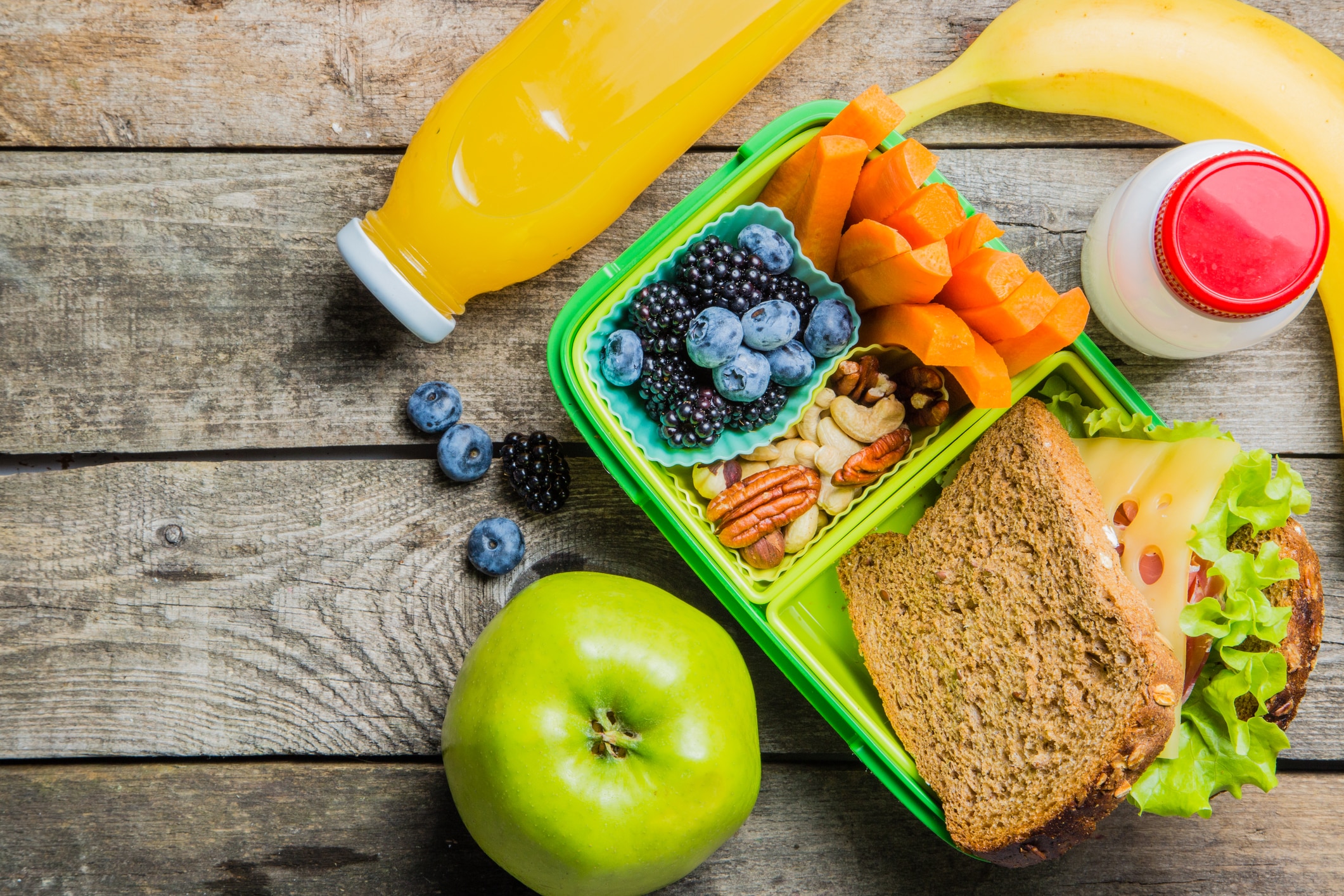With all the convenience foods marketed as healthy options for your child, it can be a bit overwhelming to figure out what to send in their lunch kit. Here are some healthy lunch basics to help you make an informed decision about what’s going into your child’s lunchbox.
Sugar! Have you ever noticed that sugar is the only item on the nutrition facts chart that doesn’t have a listed daily recommended intake value? This is because food manufacturers lobbied the government to keep this information away from Canadians. A lot of foods and beverages give a person way over the daily limit with just one serving — and that includes foods and beverages we often think of as healthy. Your child should be eating a maximum of 25 grams of sugar in processed foods every day. What that means is the sugar in a raw apple is fair game and doesn’t need to be counted, but the sugar in apple juice is counted against their 25 grams total. Instead of juice, pack your child plain white milk or water, and snacks should have no more than 9 grams of sugar and no less than 2 grams of fibre. Raw, whole fruits, cheese, and certain, high fibre granola bars are good choices.
Balanced. It can seem so convenient to just throw pre-made foods or a peanut butter and jelly sandwich into your child’s lunch box. It takes 30 seconds, doesn’t go bad, and your kid actually eats it. The problem is that most of the time these foods are high in carbohydrates (ie: sugar), fats, and (if you’re lucky) some protein. However, they don’t offer much in the way of veggies. A balanced meal for your child should have twice as much vegetables as everything else. If your family prefers a meat substitute like eggs or legumes, you’ll need to experiment a bit to find out what balanced looks like for you.
Often the best lunch is leftover dinner. Most school aged children have access to a microwave, and balanced homemade suppers with a meat (or protein substitute), veggie, and starch make great lunches when warmed up. For cold lunches, offer wraps, sandwiches, salads, and finger foods — always with lots of vegetables. Carrot sticks, snow peas, cauliflower, mushrooms, cherry tomatoes, and fresh beans are often popular with kids when raw and dipped in a little ranch.
We know that you care a lot about your child and that you want them to eat well. We also understand that Canadians are as busy as ever. If you need help coming up with healthy ways to feed your child without resorting to convenience foods, we recommend speaking with a nutritionist. If you’re covered by one of our great health benefits packages, your visit should be partially or fully covered! Contact us today if you need health coverage that actually meets your basic needs.













